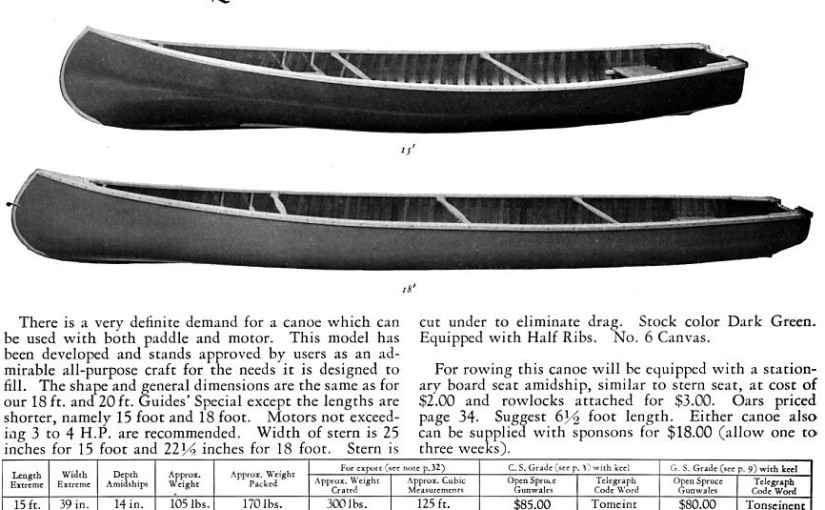This post is a continuation of a previous post describing a project to build a Grand Laker-type canoe. My intended method is to build a traditional cedar/canvas canoe structure, which means first of all building a form since that is how those boats are built. I refer you to Jerry Stelmok and Rollin Thurlow’s book The Wood and Canvas Canoe for a complete explanation of building both a form and a canoe. The prerequisite for any boat is a set of plans and at this stage in my project, the plans are still the focus. There are no readily available plans for the Grand Laker canoes that I have been able to find; Gil Gilpatrick of Skowhegan Maine has published lines for a Grand Laker-type, but he does not know of any pictures of boats built from these lines, and neither does he use this type of boat. Consequently, my project at this point is a matter of developing a set of lines that will become my boat.
A comment on building method – I prefer cedar/canvas type construction with the modification of using either an epoxy filler on the canvas, or fiberglass/epoxy instead of canvas. I want the strength of the epoxy in the covering; as canvas gets wet it gets waterlogged and heavier, as well as prone to rot without the old-time lead-based paints and fillers, and is not as tough as an epoxy-coated skin. I prefer the appearance of the ribs and planking on the inside of the boat as compared to a strip-built boat, and I also find it enjoyable to assemble a rib/plank boat. Strip-plank has its merits, but to my eye aesthetics is not one of them. So much for disclosure.
Making a form takes about as much work as making a canoe, so the importance of making a form in the right shape can’t be overstated.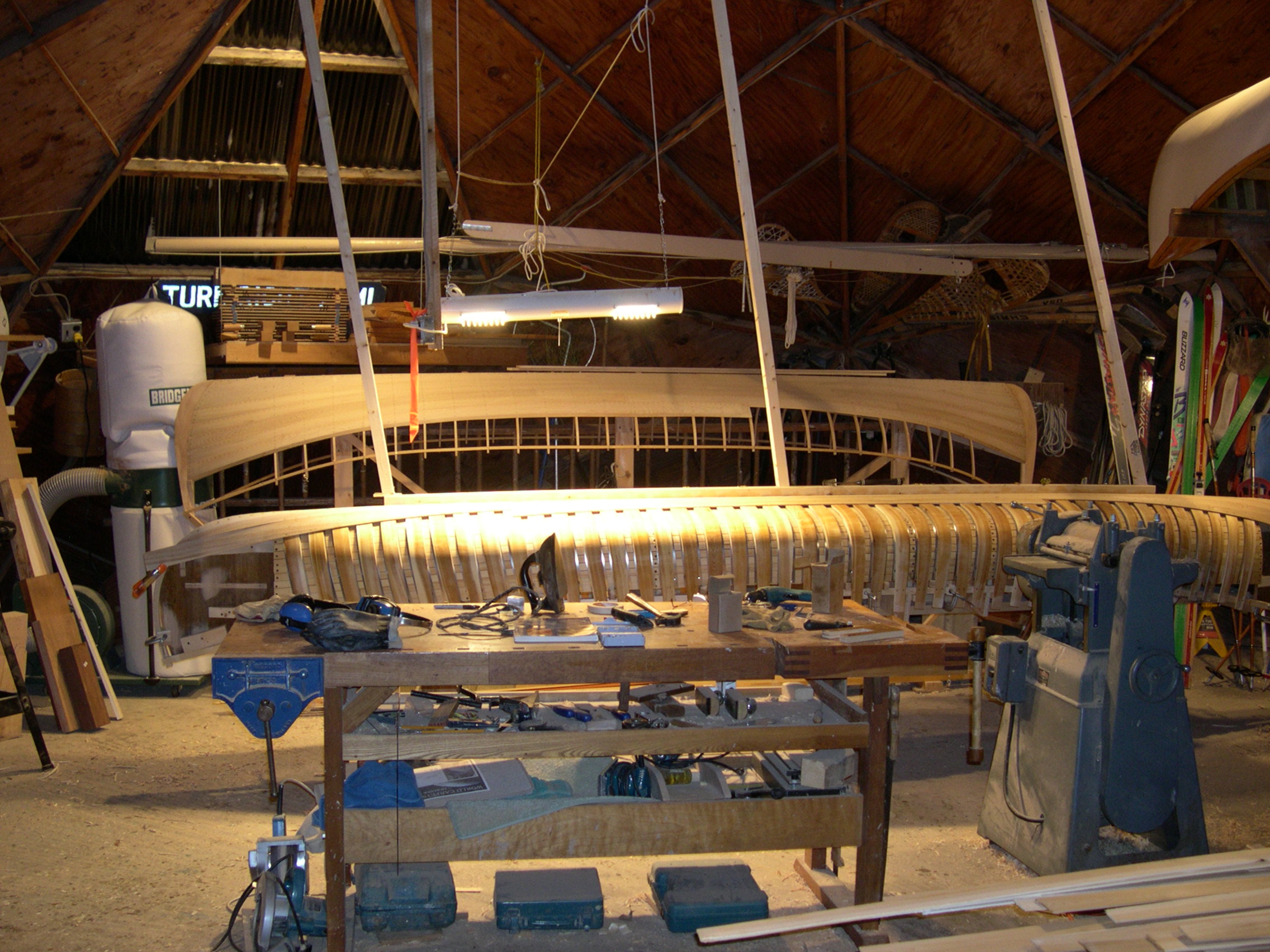
The previous post came up with a set of offsets for a square-stern canoe of the Grand Laker-type that needed to be validated somehow if it was going to be the basis of my new form. Further digging revealed a number of characteristics of similar boats that I decided to incorporate into a revised design, as well as illustrating the ways that these boats vary. First, general dimensions –
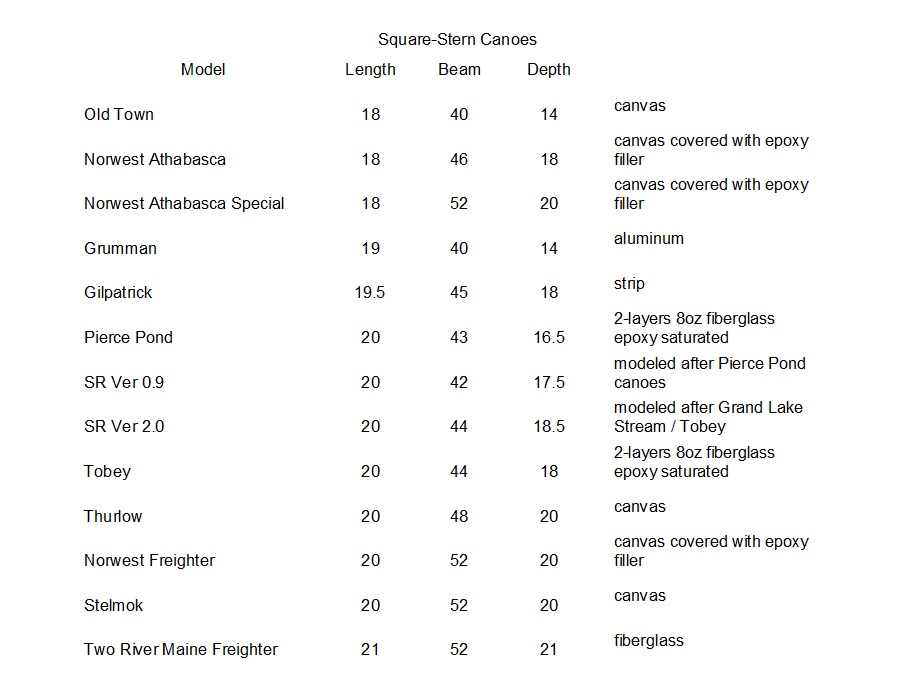 I found that my original design of 42″ x 17.5″ was on the narrow/shallow side. The Old Town square-stern boats were really just guide canoes with the tail-end cut off and replaced with a transom, no doubt how the whole class of boats got started, but most of them evolved quickly to deeper and wider. Of the boats now being built, only the Grumman approaches the Old Town, which is not to say the Grumman is not widely accepted, which it is, but I think it can get away with the shallow depth by being very flat through the bottom. My first design, modeled on the boats I saw in western Maine, came fairly close to an accurate copy, but I also now see that those boats are suited to the small lakes they work on and may be uncomfortable on large water. Further, I started to see that most the the Grand Laker / square stern canoes had a lesser-or-greater amount of tuck in the stern that I had not put in my first design – this is the Scott freighter model –
I found that my original design of 42″ x 17.5″ was on the narrow/shallow side. The Old Town square-stern boats were really just guide canoes with the tail-end cut off and replaced with a transom, no doubt how the whole class of boats got started, but most of them evolved quickly to deeper and wider. Of the boats now being built, only the Grumman approaches the Old Town, which is not to say the Grumman is not widely accepted, which it is, but I think it can get away with the shallow depth by being very flat through the bottom. My first design, modeled on the boats I saw in western Maine, came fairly close to an accurate copy, but I also now see that those boats are suited to the small lakes they work on and may be uncomfortable on large water. Further, I started to see that most the the Grand Laker / square stern canoes had a lesser-or-greater amount of tuck in the stern that I had not put in my first design – this is the Scott freighter model – Below is Jerry Stelmok’s Moosehead Laker –
Below is Jerry Stelmok’s Moosehead Laker –
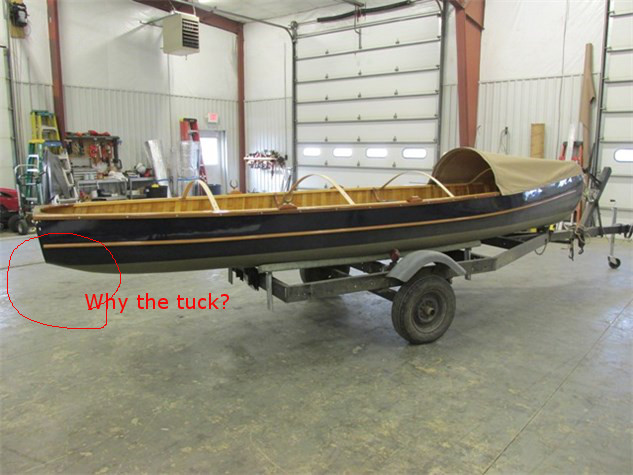 The description of the Old Town square-stern canoes at the heading of this blog mentions the cutaway stern, and the boats in this picture taken at Grand Lake Stream all show a marked tuck –
The description of the Old Town square-stern canoes at the heading of this blog mentions the cutaway stern, and the boats in this picture taken at Grand Lake Stream all show a marked tuck –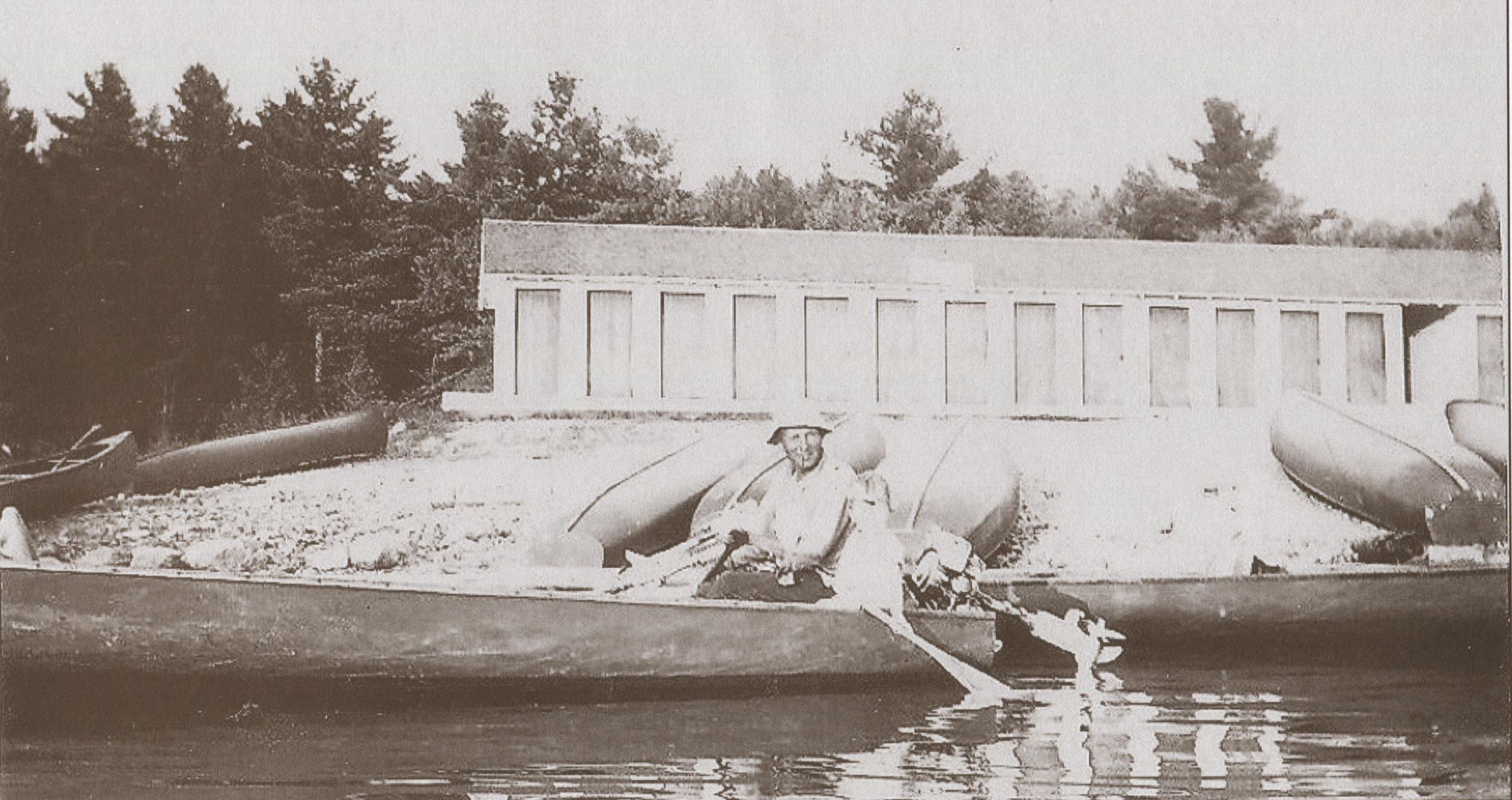 I was able to study a boat built by one of the two remaining active builders in Grand Lake Stream, Dale Tobey, and he uses a more gradual cutaway than the boats in the picture above, but still ends up with about 3″ of tuck over the stern 4′ of the boat – bad picture, but usable – for one thing, how else are you going to go from a center depth of 18+” to a 15+” transom for a short-shaft outboard?
I was able to study a boat built by one of the two remaining active builders in Grand Lake Stream, Dale Tobey, and he uses a more gradual cutaway than the boats in the picture above, but still ends up with about 3″ of tuck over the stern 4′ of the boat – bad picture, but usable – for one thing, how else are you going to go from a center depth of 18+” to a 15+” transom for a short-shaft outboard?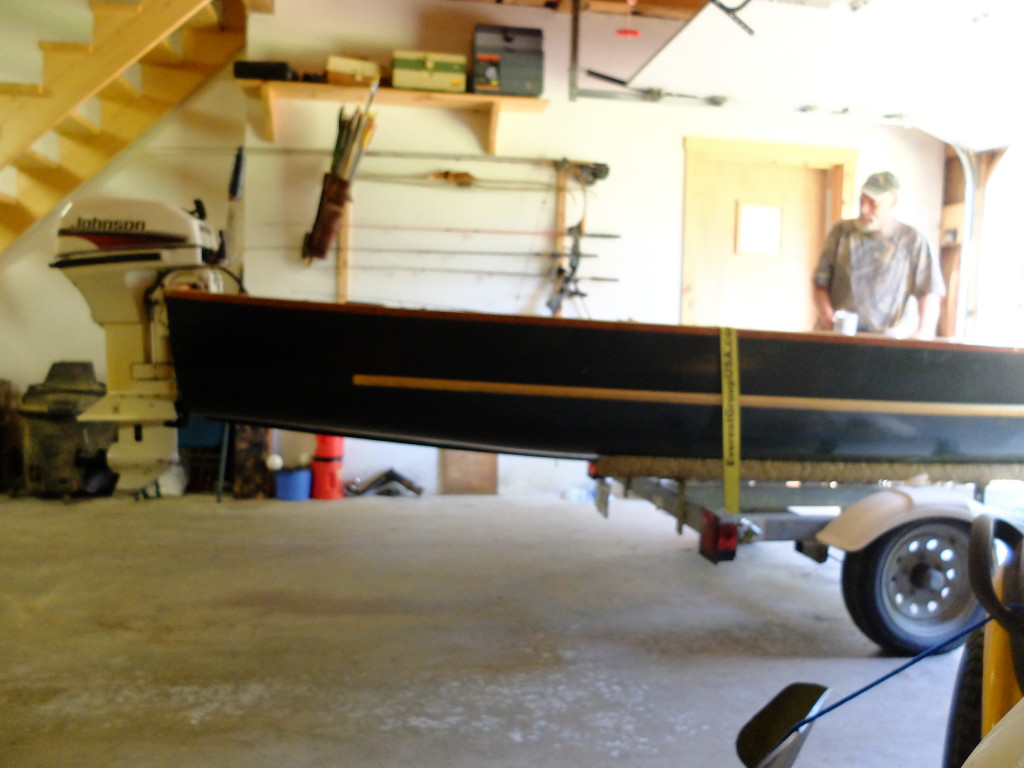 The boat above is a Dale Tobey built for John Arcaro of Grand Lake Stream.
The boat above is a Dale Tobey built for John Arcaro of Grand Lake Stream.
Another question for the designer is what form to give the hull in terms of bottom arch and rocker. Of the dozen or so boats I have looked at, mostly in Grand Lake Stream, the bottoms are all shallow to moderately arched, with little to no rocker until the stern tuck. This view of the inside of the same Toby boat as above shows quite rounded sections – 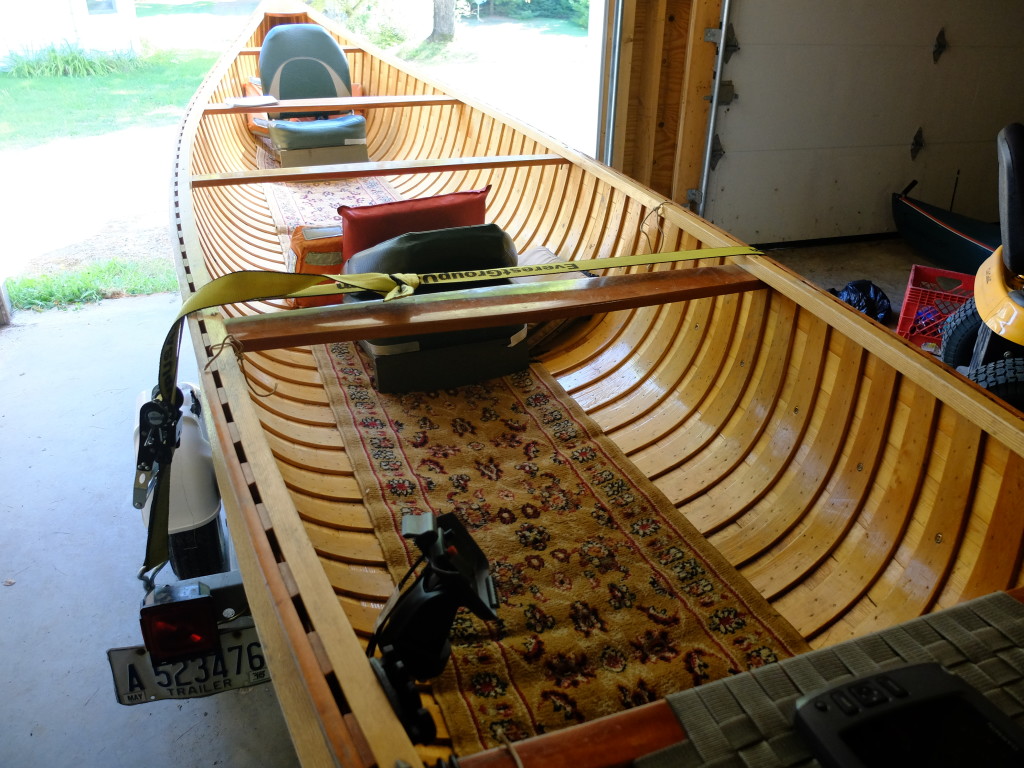 As does this boat on the shore of Pocumcus Lake, although appearing flatter in the center.
As does this boat on the shore of Pocumcus Lake, although appearing flatter in the center.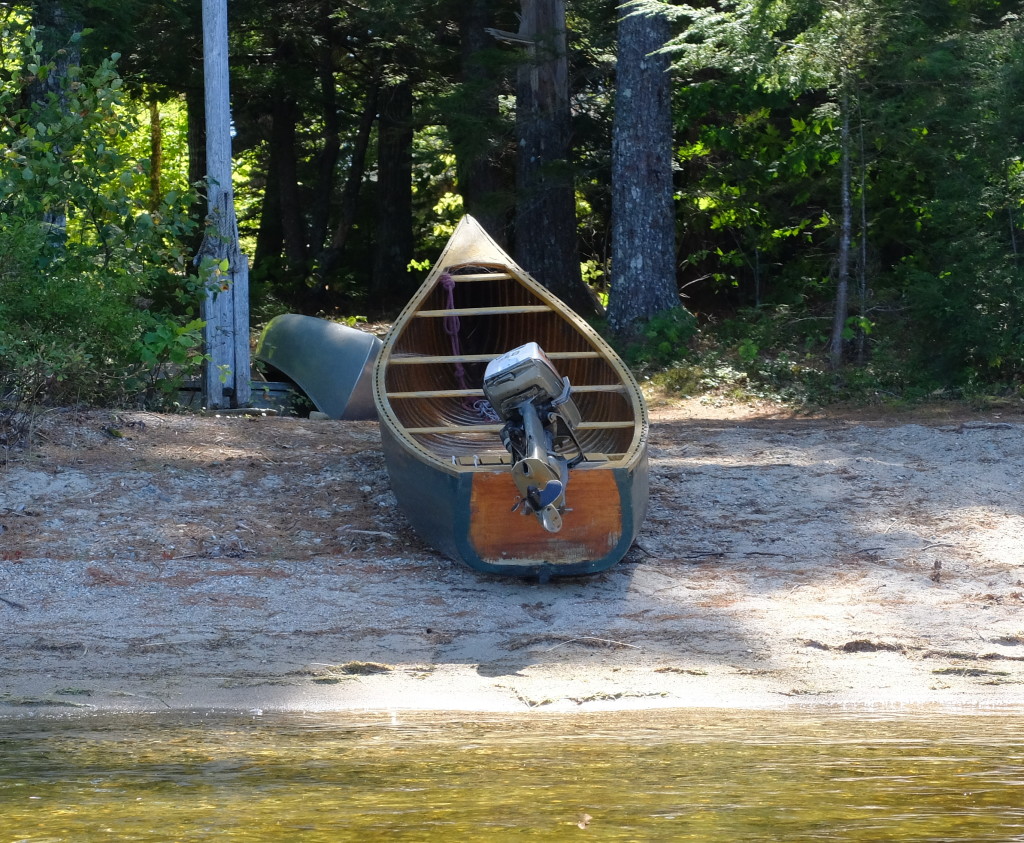 I also saw boats at GLS that were similar to the western Maine boats, known in GLS as ‘pickerel’ boats for the narrow form, such as this one that Mike Remillard showed me –
I also saw boats at GLS that were similar to the western Maine boats, known in GLS as ‘pickerel’ boats for the narrow form, such as this one that Mike Remillard showed me – 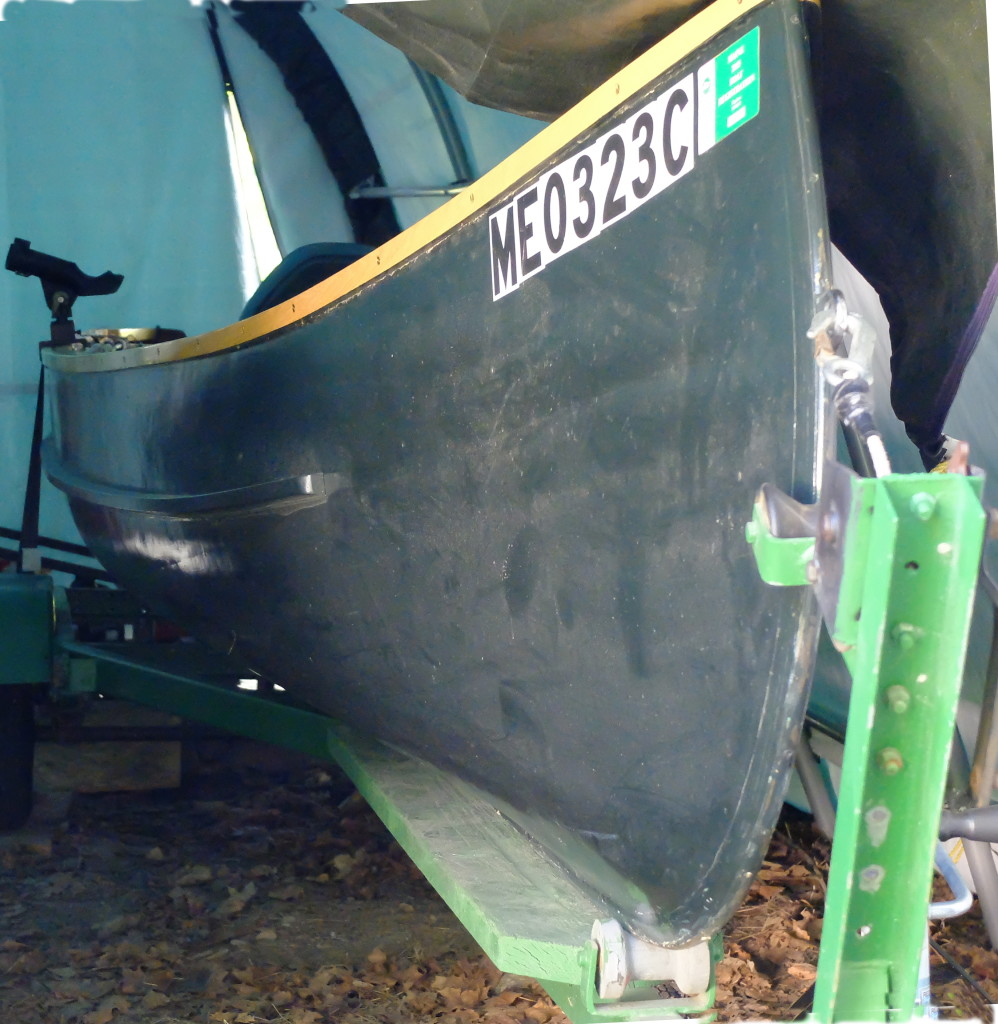 The wider boats make more sense to me, and my next step is to re-draw the design to aim for a boat 18 1/2″ deep inside, 44″ wide to the outside, straight/no rocker keel until the start of a 3″ tuck about 4′ in from the stern, with a shallow arch through the body plan. Until next time…
The wider boats make more sense to me, and my next step is to re-draw the design to aim for a boat 18 1/2″ deep inside, 44″ wide to the outside, straight/no rocker keel until the start of a 3″ tuck about 4′ in from the stern, with a shallow arch through the body plan. Until next time…
